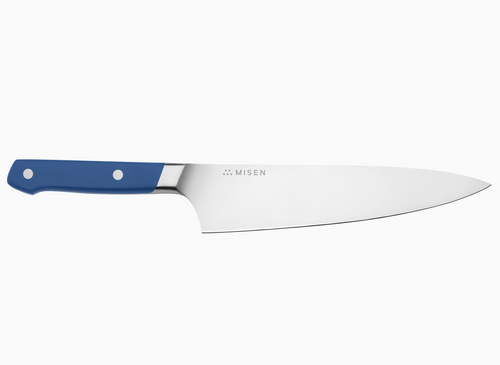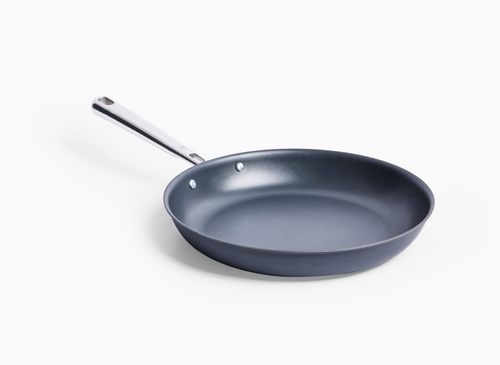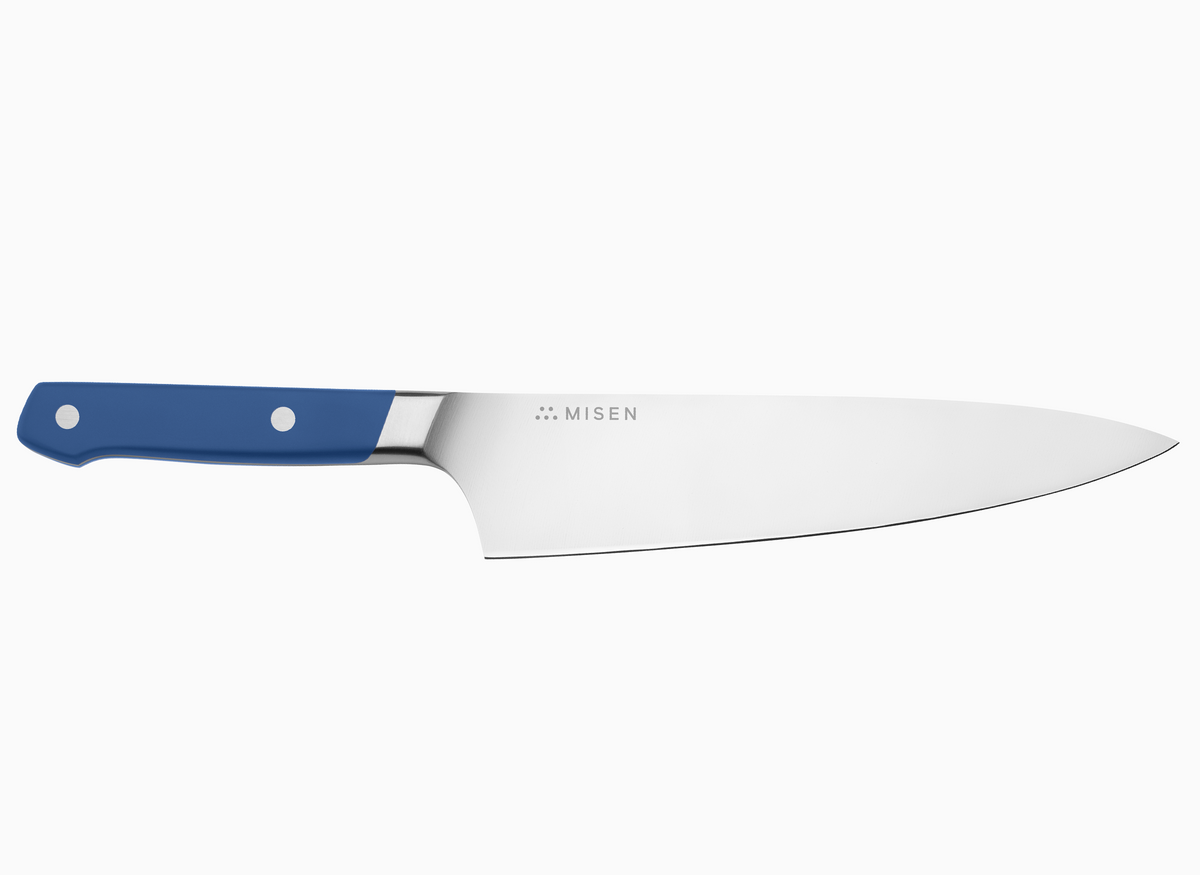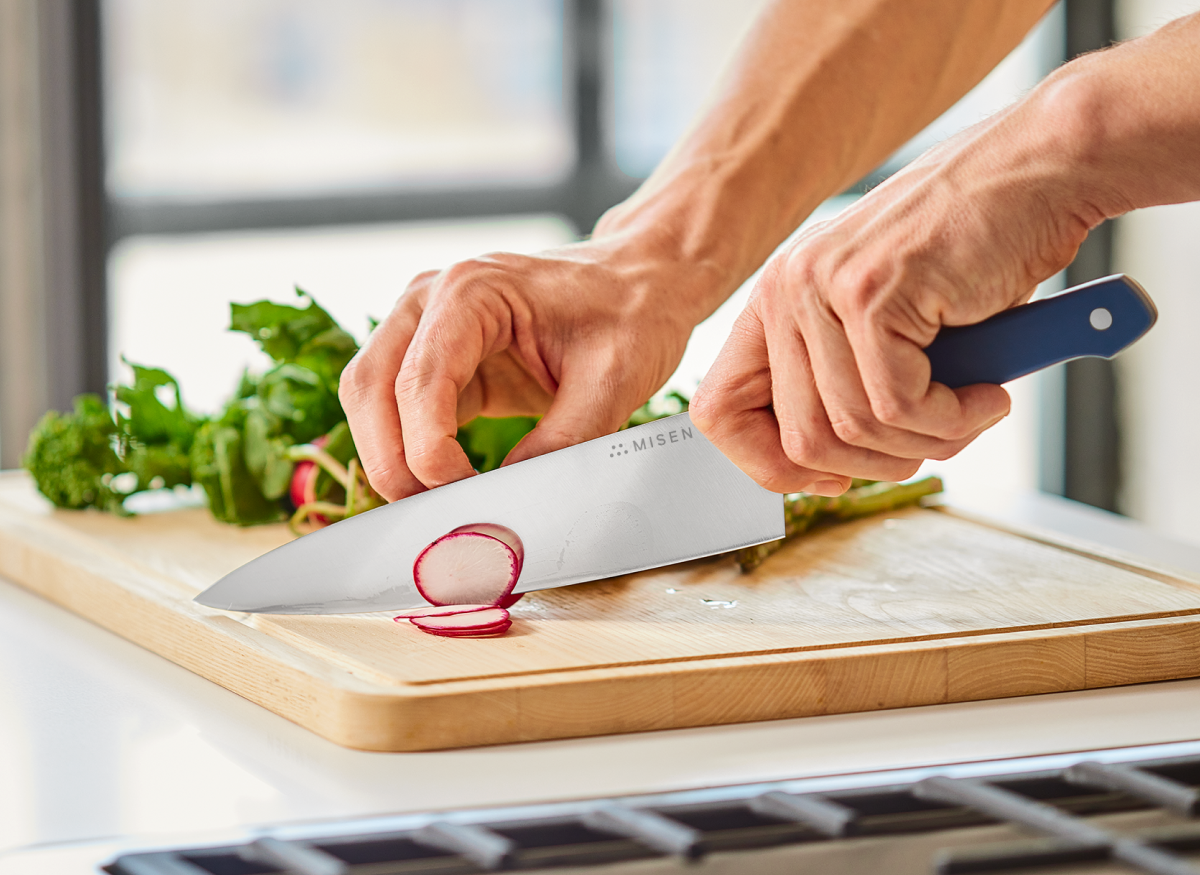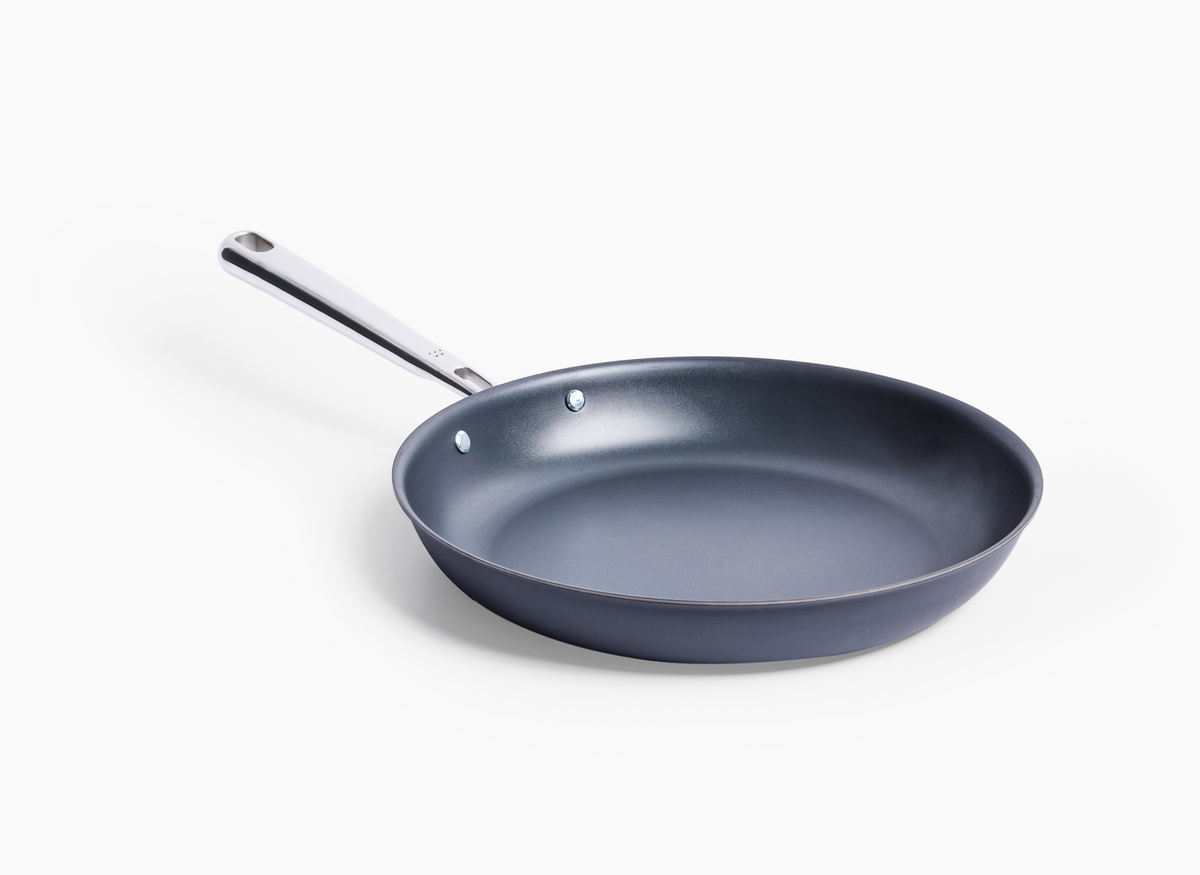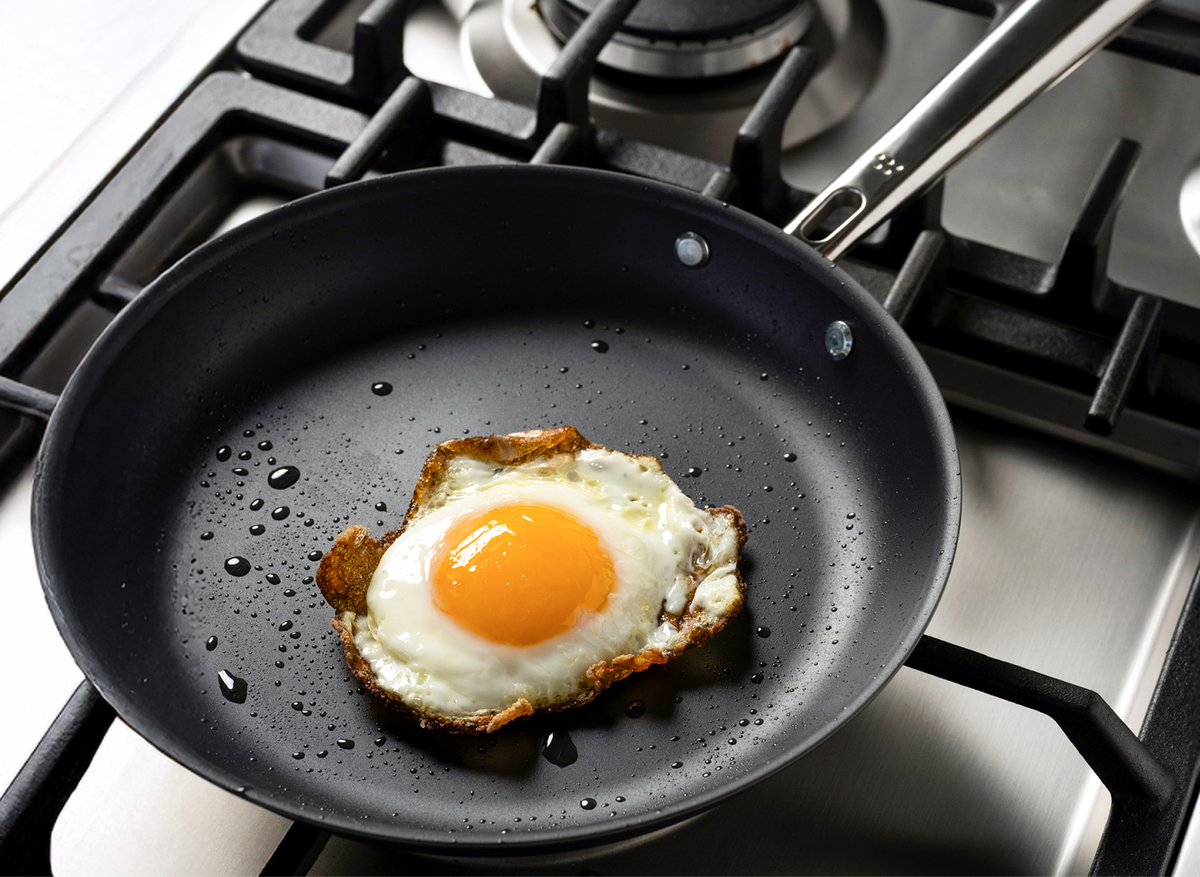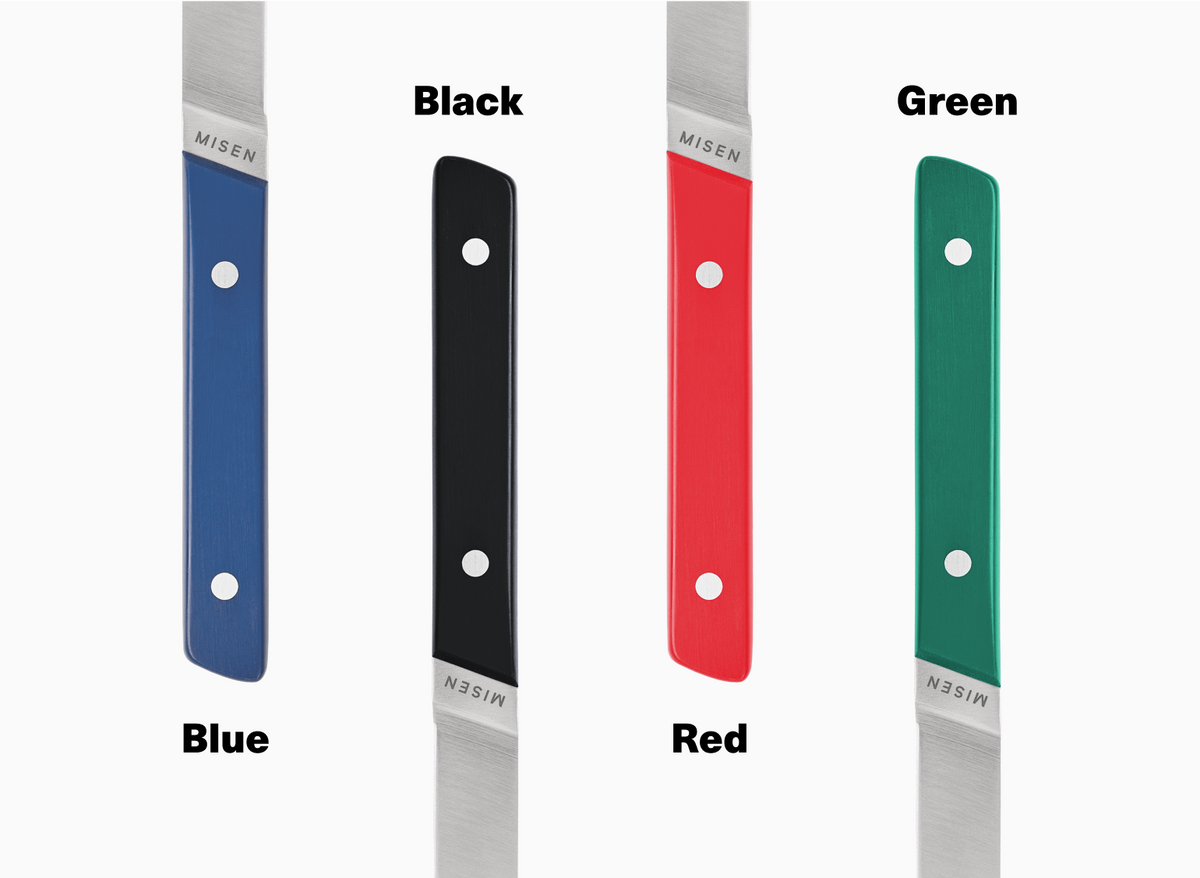Substitute for Heavy Cream: Smart Swaps to Save the Day

Introduction
Mix 3/4 cup whole milk with 1/4 cup melted butter for an instant heavy cream substitute that works in most recipes.
The Mid-Recipe Panic: When You're Out of Heavy Cream
We've all been there - halfway through a recipe when you realize the heavy cream is missing. Don't panic. You can save your dish with ingredients already in your kitchen. Heavy cream packs 36-40% milk fat, creating those rich textures we love. The quickest fix? Mix 3/4 cup whole milk with 1/4 cup melted butter for an instant substitute that works in most recipes (just know it won't whip) [1][2]. This simple solution turns a potential disaster into a minor adjustment.
What Makes Heavy Cream Essential in Cooking
Heavy cream earns its kitchen MVP status through sheer versatility. Its high fat content (36-40%) lets it pull double duty - it can be boiled without breaking, whipped into stable peaks, or stirred into sauces for instant richness [3][4]. From transforming basic marinara into restaurant-worthy pasta sauce to creating airy mousses and frostings, heavy cream delivers every time. Plus, it outlasts other dairy in your fridge, staying fresh for up to a month when properly stored [3].
Why Having Substitute Knowledge Is Your Culinary Safety Net
Knowing your substitutes makes you a more confident cook. Instead of abandoning a recipe when you're missing an ingredient, you can adapt and keep going. Smart substitutions come down to understanding three things: texture, flavor, and how the ingredient behaves when cooked. Take coconut milk - it can replace heavy cream in many dishes, but you'll need to work with its natural sweetness and remember it won't whip like dairy. This flexibility saves emergency grocery runs and often leads to discovering combinations you actually prefer. The more you understand how ingredients work, the more creative freedom you have in the kitchen.
Understanding Heavy Cream Before Making Substitutions
Heavy cream's 36-40% fat content creates unique properties that make it essential for both cooking and baking applications.
The Science Behind Heavy Cream: Fat Content and Culinary Properties
Heavy cream's unique properties stem from its concentrated milk fat content of 36-40%, which creates a versatile ingredient for both cooking and baking [7]. At the microscopic level, heavy cream is a complex colloid where tiny fat globules are suspended in a water-based solution, protected by phospholipid membranes that have both water-loving and water-fearing regions [8]. These microscopic fat globules, measured in micrometers, are too small for our tongues to detect individually, which creates cream's characteristic smooth, velvety mouthfeel rather than feeling like separated oil and water [8]. The high fat content allows heavy cream to be boiled without curdling, making it ideal for thickening soups and creating silky sauces [7]. When whipped, the fat globules' protective membranes break down, causing the exposed triglycerides to cluster around air bubbles and create a stable foam structure - but this transformation only works with cream containing at least 30% fat [8]. The fat content also contributes to heavy cream's remarkable shelf life, lasting up to a month when properly refrigerated [7].
Heavy Cream vs. Whipping Cream: Important Distinctions
Heavy cream and heavy whipping cream are actually the same product with different names - both must contain at least 36% milk fat according to FDA standards [9]. The key distinction lies between these and regular whipping cream (also called light whipping cream), which contains 30-36% milk fat [10]. This difference in fat content affects performance: heavy cream produces sturdier whipped cream that holds firm peaks, while regular whipping cream creates a lighter, airier texture that won't hold its shape as long [11]. The higher fat content also makes heavy cream ideal for creating thick sauces and rich desserts, while regular whipping cream works better as a lighter topping for items like fruit salads and pies [9]. At the microscopic level, both types are homogenized blends where milk fat is thoroughly emulsified into the milk to prevent separation [9]. Despite the naming confusion, you can use heavy cream and heavy whipping cream interchangeably in recipes, but regular whipping cream may produce different consistencies due to its lower fat content [10].
When You Might Need a Substitute (Beyond Just Running Out)
Heavy cream substitutes become essential in several common scenarios beyond simply running out. Dietary restrictions often necessitate alternatives - those following vegan or dairy-free diets need plant-based options, while others may seek lower-fat alternatives for health reasons [2]. Recipe adaptations also drive the need for substitutes, particularly when making healthier versions of classic dishes or accommodating food allergies and intolerances [2]. Even storage limitations create substitute scenarios - heavy cream's relatively short refrigerated shelf life means having reliable alternatives can prevent waste [12]. The high fat content (36-40%) that makes heavy cream so versatile also makes it unsuitable for certain dietary needs, driving demand for alternatives that can still deliver similar cooking functionality [12]. Understanding these varied substitute scenarios helps home cooks make informed choices about which alternative will work best for their specific situation.
How to Evaluate Your Recipe's Needs for the Perfect Swap
Before choosing a heavy cream substitute, evaluate what role the cream plays in your recipe. For whipped toppings, you'll need alternatives with at least 30% fat content that can hold peaks - coconut cream works well here, while milk-butter combinations won't whip at all [13]. In baked goods, fat content directly impacts moisture and structure, making it crucial to match heavy cream's 36-40% fat level for proper texture [12]. Soups and sauces offer more flexibility since the main goal is richness and body - even cornstarch-thickened milk can work effectively [12]. Consider your cooking method too - some substitutes like cornstarch mixtures need heat to thicken properly, while others might curdle at high temperatures [12]. The flavor profile also matters - coconut cream adds its own distinct taste that enhances some dishes but could clash with others [12]. By analyzing these factors - whipping needs, fat requirements, cooking temperature, and flavor compatibility - you can select the most appropriate substitute for your specific recipe [13].
Dairy-Based Substitutes: Quick Solutions from Your Refrigerator
The milk and butter combination creates the most reliable emergency substitute, matching heavy cream's performance in most cooking applications.
Milk and Butter: The Classic Emergency Solution (With Exact Ratios)
The most reliable emergency substitute for heavy cream combines whole milk and butter in specific ratios. Mix 3/4 cup whole milk with 1/4 cup melted butter (4 tablespoons) to create 1 cup of heavy cream substitute [14]. This combination works because butter adds the necessary fat content to milk, bringing the total fat percentage closer to heavy cream's 36-40% range [2]. While this substitute performs well in most cooking and baking applications, it has one key limitation - it won't whip into peaks like real heavy cream [14]. For best results, let the melted butter cool to room temperature before combining with milk to ensure proper emulsion [14]. You can also add a tablespoon of flour to thicken the mixture further, especially when using lower-fat milk varieties [2]. This substitute works particularly well in recipes where heavy cream adds richness and body, such as soups, sauces, and baked goods [2].
Half-and-Half with Butter: When You Need Something Richer
Half-and-half combined with butter creates one of the closest matches to heavy cream's rich texture and taste. Since half-and-half contains about one-third of heavy cream's fat content, adding butter helps achieve the proper fat percentage for most recipes [2]. To substitute one cup of heavy cream, mix 7/8 cup half-and-half with 1/8 cup melted butter [2]. This combination works exceptionally well in virtually any recipe requiring heavy cream, including those that need whipping [2]. For recipes where richness matters more than precise fat content, you can even use half-and-half alone as a 1:1 substitute, though the final dish will be slightly less decadent [12]. The versatility of this substitute makes it particularly valuable for enriching soups, sauces, and baked goods when you need something closer to true heavy cream than basic milk-butter combinations [12].
Evaporated Milk: The Shelf-Stable Savior
Evaporated milk offers a shelf-stable alternative that closely mimics heavy cream's richness. Since it's made by removing about half the water content from regular milk, evaporated milk provides a concentrated dairy flavor and thicker consistency that works well in most recipes calling for heavy cream as a liquid ingredient [15]. Use it in a 1:1 ratio to replace heavy cream, though keep in mind it adds a subtle caramel-like taste that particularly enhances desserts like crème brûlée and homemade caramel sauce [15]. For recipes requiring extra richness, combine three-quarters cup evaporated milk with one-third cup butter to better match heavy cream's fat content [15]. While evaporated milk won't whip into peaks like heavy cream, its concentrated composition and long shelf life make it an ideal pantry staple for enriching soups, sauces, and baked goods without requiring refrigeration [15].
Yogurt, Sour Cream, and Cream Cheese: Tangy Alternatives That Work
Tangy dairy products like yogurt, sour cream, and cream cheese offer rich alternatives to heavy cream while adding distinctive flavors. Greek yogurt provides a protein-rich substitute - mix equal parts Greek yogurt and milk to match heavy cream's consistency in sauces and savory dishes [16]. For cream cheese applications, this thick dairy product (containing up to 75% fat) works especially well in sweet sauces, soups, and pasta dishes, though it may need thinning with milk for cold applications [15]. Sour cream makes an excellent substitute in recipes where you don't mind its characteristic tang - it can even be sweetened with confectioners' sugar to create a whipped cream alternative [15]. When using Greek yogurt specifically, add it off the heat to prevent curdling, and note that while it won't whip like heavy cream, it excels at thickening soups and sauces while delivering more protein and fewer calories than traditional cream [17].
Plant-Based and Non-Dairy Heavy Cream Alternatives
Coconut cream whips into peaks just like dairy cream, making it the most versatile plant-based substitute for desserts and savory dishes alike.
Coconut Cream: The Most Versatile Non-Dairy Option
Coconut cream stands out as your most versatile plant-based swap, especially if you're following vegan or keto diets. Here's the simple trick: pop a can of full-fat coconut milk in your fridge overnight, then scoop off the thick cream that separates on top. That concentrated cream packs about 20 grams of fat per half-cup, giving you the rich texture you need. The best part? Unlike other non-dairy options, coconut cream actually whips into peaks for desserts. Just remember it brings its own tropical flavor to the party - fantastic in curries and smoothies, but maybe not ideal for your classic Alfredo. Use it cup-for-cup wherever heavy cream is called for, keeping those coconut notes in mind when planning your dish.
Nut-Based Creams: Cashew, Almond, and Beyond
Nut-based creams bring serious richness to your cooking, with cashews being the MVP thanks to their mild flavor. Making cashew cream couldn't be simpler - soak 1 cup raw cashews in hot water for 15 minutes (or overnight in cold water for better planning), then blend with 3/4 cup water and a pinch of salt until completely smooth. You'll get a versatile cream with less than half the fat of dairy cream but all the body you need for pasta sauces, soups, and even desserts. Almonds and other nuts work too, though they'll add their own distinct flavors. Got a nut allergy? Sunflower seeds step in beautifully using the same measurements. Just know that these alternatives won't whip up for topping - they're best for adding creaminess to cooked dishes. Keep your homemade nut cream in the fridge for up to a week, or freeze it for three months. If it separates after thawing, a quick blend brings it right back to life.
Soy Milk and Oil Combinations: Creating the Perfect Fat Ratio
Creating dairy-free cream with soy milk and oil is surprisingly easy. Mix 2/3 cup soy milk with 1/3 cup olive oil to make one cup of heavy cream substitute. This combo nails the fat-to-liquid ratio you need for rich sauces and creamy soups. Give it a good blend to make sure everything's mixed smoothly - no one wants oil floating on top. While this works great for cooking and baking, don't expect it to whip up for dessert toppings. The olive oil acts just like butter does in dairy substitutes, adding the fat content that makes everything taste rich and satisfying. Pro tip: use a neutral oil like grapeseed if you don't want that olive flavor coming through in sweet dishes. This substitute shines in pasta sauces, creamy soups, and even baked goods where you need moisture and richness.
Store-Bought Non-Dairy Creams: Which Ones Actually Perform Well
The store-bought non-dairy cream game has seriously stepped up. For a protein-packed option, blend silken tofu with soy milk, vanilla, and sugar - it actually whips into peaks for desserts. Canned coconut cream remains the all-star player, whipping beautifully and working in everything from coffee to curry (just know that coconut flavor tags along). When shopping, check the nutrition label - you want at least 20 grams of fat per half-cup for cooking performance that matches dairy cream. Commercial soy creamers work well too, especially when you mix them with a bit of oil for extra richness. If you're just looking for something to lighten your coffee or add to soups, shelf-stable options provide convenience without the commitment of fresh cream. The key is matching the product to your needs - whipping requires coconut cream or specially formulated products, while cooking gives you more flexibility.
Matching Your Substitute to Your Cooking Method
Different cooking methods demand different substitutes - what works for whipping won't necessarily work for sauces or baking.
For Soups and Savory Sauces: Substitutes That Won't Break or Curdle
When you're working with soups and sauces, choosing the right substitute prevents that dreaded curdled mess. Greek yogurt brings protein and tang to the party - just remember to take your pan off the heat first, then stir in equal parts yogurt and milk [15]. If you're keeping things on the stovetop, crème fraiche is your most reliable friend since its higher fat content handles heat without breaking [15].
The milk-butter combo we covered earlier works beautifully in creamy sauces, especially when you're making Alfredo in your favorite pan [15]. Need something from the pantry? Evaporated milk delivers concentrated flavor and won't separate under heat - just swap it 1:1 for heavy cream [15]. For thickening without dairy, whisk 2 tablespoons cornstarch into 1 cup milk before adding to your hot dish, then simmer for at least a minute to activate that thickening power [12].
For Baking Projects: Options That Maintain Moisture and Structure
Baking demands precision, so matching heavy cream's fat content keeps your cakes moist and your pastries tender. As we discussed in the Dairy-Based Substitutes section, the milk-butter blend remains your go-to for most baking needs - though skip it if your recipe calls for whipping [12]. Want something richer? Half-and-half plus butter (7/8 cup to 1/8 cup) creates the closest match to heavy cream's baking performance [2].
Going dairy-free? Coconut cream packs the fat content you need - about 20 grams per half-cup - but expect that tropical flavor to come through in your finished treats [12]. Evaporated milk works when your recipe just needs liquid cream, using a simple 1:1 swap, though it won't deliver the same richness or whipping power [2].
For Whipping: Alternatives That Can Hold Peaks
Getting those perfect peaks without heavy cream? You need at least 30% fat content to make it happen. Coconut cream is your non-dairy hero here - the chilling and scooping method from our Plant-Based section works like magic for whippable cream [12]. With dairy options, that half-and-half and butter blend (7/8 cup to 1/8 cup) can whip up, just don't expect the same lofty peaks as the real deal [16].
Here's a pro tip for stability: swap granulated sugar for confectioners' sugar. That hidden cornstarch keeps your whipped topping perky for 12 hours in the fridge [25]. Need even longer storage? A touch of instant pudding mix extends peak life to 48 hours, though you'll taste a hint of pudding [25].
For Specialty Applications: Ice Cream, Ganache, and Coffee Creamers
Specialty recipes demand specific solutions. Ice cream needs that 36-40% fat for scoopable texture - substitutes just can't match heavy cream's freezing properties [26]. Making ganache? Whole milk works in a pinch, but keep extra chocolate chips handy to thicken things up during reheating [26].
For your morning coffee, light cream (18-30% fat) hits the sweet spot between richness and pourability - just don't let it sit on the heat too long or it'll curdle [27]. Half-and-half needs gentle treatment in hot coffee: temper it first by whisking in small amounts of hot coffee before adding the rest [27]. Plant-based options work too - coconut cream makes silky ganache and decent ice cream, while silken tofu blended with soy milk creates a protein-packed coffee creamer, though expect their flavors to shine through [26].
DIY Heavy Cream: Make Your Own in Minutes
Homemade heavy cream using a 1:1 ratio of milk to butter creates 41.5% fat content - even richer than store-bought versions.
Two-Ingredient Emergency Heavy Cream Recipe
The quickest heavy cream substitute uses just two kitchen staples: whole milk and unsalted butter. As we covered earlier, this classic combination creates a reliable substitute for most cooking needs. Here's the straightforward method: melt 1/4 cup butter in a saucepan with 3/4 cup whole milk over medium heat, stirring until just melted [28]. Pour into a blender and blend on high for 1-2 minutes until smooth [28]. Use immediately or refrigerate for up to 4 hours [28]. This emergency fix works perfectly in soups, sauces, and baked goods - just remember it won't whip into peaks.
Creating Homemade Heavy Cream That Can Actually Be Whipped
Want homemade cream that actually whips? Use equal parts whole milk and butter - a 1:1 ratio that creates about 41.5% fat content, even richer than store-bought [29]. Heat the mixture over medium-low until the butter melts, blend on high for one minute, then cover and refrigerate overnight [29]. The key to success is keeping everything cold - use an ice bath if your kitchen runs warm [29]. When you're ready to whip, start your mixer on medium speed and gradually increase to high. This prevents splattering and creates more stable peaks [30]. After 5-8 minutes, watch for the cream to form stiff trails and gain volume - that's your cue to stop [31]. Your homemade whipped cream is now ready for piping or dolloping.
Storage Guidelines and Shelf Life Expectations
Store your homemade cream in an airtight container in the coldest part of your fridge. While store-bought heavy cream can last up to a month (as mentioned earlier), homemade milk-butter combinations stay fresh for 4-5 days [32]. Always check for sour smells, mold, or separation before using. If cream sits out for more than 2 hours, toss it - bacterial growth isn't worth the risk [32]. You can freeze heavy cream for up to 4 months, but it won't whip well after thawing [32].
Troubleshooting Common Issues with Homemade Cream
Making homemade cream doesn't always go smoothly, but most problems have simple fixes. If your mixture separates, the butter was likely too hot - let it cool to room temperature and blend again [33]. Not thickening? Double-check your measurements - you need exactly 3/4 cup milk to 1/4 cup butter for the right consistency [34]. For whippable cream, cold is key. If your kitchen's warm, set your mixing bowl over ice to keep everything chilled [12]. Working with alternatives? Prevent cornstarch clumps by mixing it with a few tablespoons of milk first [33]. For coconut cream, chill the can overnight and scoop only the solid portion - the liquid stays behind [33].
Healthier and Dietary-Conscious Substitutes
Greek yogurt mixed with milk provides more protein and fewer calories than heavy cream while maintaining creamy consistency.
Lower-Fat Options That Still Deliver on Flavor and Texture
Looking to lighten up your recipes without sacrificing that creamy goodness? You've got plenty of options that deliver on both flavor and texture. The classic milk and cornstarch combo (detailed in our DIY section) works beautifully for thickening soups and sauces while keeping calories in check.
For a protein boost, try mixing equal parts Greek yogurt and whole milk - this powerhouse substitute adds nutritional value while creating that rich consistency you're after. Just remember to add it off the heat to prevent curdling. Half-and-half makes a simple 1:1 swap when you want something lighter but still indulgent, though your dish will be slightly less rich than the original.
When you need concentrated flavor without all the fat, evaporated milk shines as a pantry-friendly option. Use it cup for cup in any recipe where heavy cream adds liquid richness. And for the ultimate low-fat solution? Silken tofu blended with soy milk creates a surprisingly creamy base that's perfect for soups and sauces - your stainless steel pan will thank you for the lighter cooking load.
Dairy-Free Solutions for Allergies and Intolerances
Navigating dairy-free cooking doesn't mean giving up on creamy textures. Coconut milk remains the MVP of plant-based substitutes - use it cup for cup anywhere you'd use heavy cream, from morning coffee to evening curry. Just know that it brings its own tropical personality to the party.
For a more neutral flavor profile, the soy milk and oil blend we covered in our plant-based section creates dairy-free magic. Cashew cream takes versatility to the next level - soak those nuts overnight, blend with water, and you've got a silky base that transforms everything from pasta sauces to salad dressings. Bonus: it's naturally sweet without any added sugars.
Silken tofu might surprise you as a cream substitute. When blended smooth with soy milk, it creates an incredibly rich texture that's perfect for desserts and creamy soups. Plus, you're sneaking in extra protein without anyone knowing. Store-bought dairy-free creams have come a long way too - many grocery stores now stock plant-based options that work beautifully in a pinch.
Keto and Low-Carb Heavy Cream Alternatives
Good news for keto followers - heavy cream is already your friend with less than half a gram of carbs per tablespoon and all that glorious fat content. But when you're out, don't panic. You've got options that keep those macros in check.
Coconut cream and milk fit perfectly into keto guidelines, delivering the fat content you need without the carbs. They're especially great in both sweet and savory dishes, though that coconut flavor will come through. For baking projects, try combining almond milk with extra egg whites - the eggs help create structure without adding carbs, compensating for any density issues from the added fats.
Full-fat cream cheese makes an excellent keto substitute when you need serious richness. Look for varieties packing at least 34g of fat per 100g serving to maintain your macros. And for your morning coffee? Blend in some grass-fed butter or ghee for a creamy, keto-friendly start to your day that'll keep you satisfied for hours.
Comparing Nutritional Profiles: Which Substitutes Are Healthiest?
Let's talk numbers - because knowing what's in your food helps you make the best choices for your body. Traditional heavy cream packs about 52 calories and 5.5 grams of fat per tablespoon, with most of that being saturated fat. That richness comes at a nutritional cost, which is why alternatives can be game-changers.
Plant-based options often bring surprising benefits. Coconut cream delivers similar richness with slightly less fat, while silken tofu practically steals the show with just 55 calories per 100g serving plus a protein boost. Cashew cream brings healthy unsaturated fats and minerals like magnesium to the table - proving that creamy doesn't have to mean unhealthy.
For calorie counters, evaporated milk slashes the numbers dramatically - just 338 calories per cup versus heavy cream's 809. Want to maximize protein? Try blended white beans (yes, really!) for an impressive 19 grams of protein per cup, or stick with the Greek yogurt-milk combo for a more familiar option that still packs a protein punch.
The key is matching your substitute to both your nutritional goals and your recipe's needs. Coconut cream brings richness but also flavor, while neutral options like silken tofu let other ingredients shine while quietly boosting nutrition. Choose what works for your body and your taste buds - there's no one-size-fits-all solution.
Conclusion
Understanding how ingredients work together transforms cooking from following recipes to creating your own culinary adventures.
Your Complete Heavy Cream Substitute Arsenal at a Glance
You've got options - lots of them. The beauty of understanding heavy cream substitutes is that you're never stuck. Whether you're working with what's in your fridge (that milk and butter combo saves the day), exploring plant-based alternatives (hello, coconut cream that actually whips!), or reaching for pantry staples like evaporated milk, each substitute has its moment to shine. The key isn't memorizing every ratio - it's understanding what your recipe actually needs from the cream. Once you grasp that, you'll instinctively know which substitute will deliver.
How to Choose the Right Substitute Every Time
Think of choosing a substitute like selecting the right tool for the job. Need whipped cream for that pie? Reach for coconut cream or add butter to your half-and-half - they're the only ones that'll hold those peaks. Making a creamy soup? You've got freedom here - even simple cornstarch and milk will give you that velvety texture. Baking something special? Match that fat content to keep your treats moist and tender. And always taste as you go - coconut cream brings its tropical notes, Greek yogurt adds tang, and each substitute has its own personality. The best part? Once you understand these simple principles, you'll stop seeing substitutions as compromises and start viewing them as opportunities to make a dish uniquely yours.
The Freedom of Cooking With Confidence (Even Without Heavy Cream)
Here's the thing about cooking with confidence - it's not about having every ingredient on hand, it's about understanding how ingredients work together. When you know that heavy cream is really just fat and liquid creating magic, suddenly that milk in your fridge plus some butter becomes a solution, not a compromise. Each time you successfully swap an ingredient, you're building your kitchen intuition. And with the right cookware - like a quality stainless steel pan that handles everything from delicate cream sauces to perfect sears - you'll feel even more empowered to experiment. That's when cooking transforms from following recipes to creating your own culinary adventures.
Never Let a Missing Ingredient Stop Your Culinary Creativity Again
You're holding more than just a list of substitutes - you're holding the key to fearless cooking. Every great home cook has faced that moment of "uh oh, I'm out of heavy cream," and every one of them has discovered that creativity beats panic every time. Start small. Try that milk and butter combo in your next pasta sauce. Experiment with coconut cream in your coffee. Notice how Greek yogurt transforms your favorite soup. Each successful swap builds your confidence, and soon you'll find yourself improvising with ease. Because here's the secret: cooking isn't about perfection - it's about delicious solutions. So go ahead, open that fridge, see what you've got, and create something amazing. Your kitchen, your rules.
- https://misen.com/blogs/news/substitute-for-heavy-cream-13-smart-kitchen-swaps-that-actually-work?srsltid=AfmBOoqq0oarv2Qg9mMkGKJtYfhpDKXj-BbxTtvTQ0yfXarC3ZYrwQ0k
- https://www.healthline.com/nutrition/heavy-cream-substitutes
- https://www.thepioneerwoman.com/food-cooking/cooking-tips-tutorials/a96936/10-ways-to-use-up-heavy-cream/
- https://www.foodnetwork.com/how-to/packages/food-network-essentials/what-is-heavy-cream-and-what-is-a-heavy-cream-substitute
- https://www.nytimes.com/article/substitutes-for-cooking.html
- https://cooking.nytimes.com/article/ingredient-substitutions
- https://www.healthline.com/nutrition/heavy-whipping-cream
- https://www.seriouseats.com/the-science-of-whipped-cream-butter-creme-fraiche
- https://www.healthline.com/nutrition/heavy-cream-vs-heavy-whipping-cream
- https://www.foodnetwork.com/how-to/packages/food-network-essentials/heavy-whipping-cream-vs-heavy-cream
- https://www.allrecipes.com/article/whats-the-difference-between-whipping-cream-and-heavy-cream/
- https://www.epicurious.com/expert-advice/heavy-cream-substitute
- https://misen.com/blogs/news/substitute-for-heavy-cream-13-smart-kitchen-swaps-that-actually-work?srsltid=AfmBOorDgs3QuAwPEtZ0eQN-XNpjQdT_8dq7I-VswpdfKkQycfllOt9c
- https://www.thekitchn.com/heavy-cream-substitute-23004405
- https://www.tasteofhome.com/article/heavy-cream-substitute/
- https://www.allrecipes.com/article/heavy-cream-substitutes/
- https://www.usdairy.com/news-articles/how-to-substitute-greek-yogurt-into-recipes
- https://www.healthline.com/nutrition/what-is-coconut-cream
- https://lovingitvegan.com/vegan-heavy-cream-substitute/
- https://www.eatingbyelaine.com/5-minute-silky-smooth-vegan-heavy-cream-dairy-free/
- https://veganinthefreezer.com/vegan-substitute-for-heavy-cream/
- https://thiswifecooks.com/vegan-heavy-cream-substitute/
- https://intentionallyeat.com/the-best-non-dairy-cream-substitute/
- https://www.thekitchn.com/heavy-cream-substitutes-23692035
- https://www.thekitchn.com/stabilized-whipped-cream-last-longer-23245058
- https://www.foodfanatic.com/cooking/kitchen-tips/substitute-for-heavy-cream/
- https://www.realsimple.com/food-recipes/cooking-tips-techniques/heavy-cream-substitute
- https://preppykitchen.com/how-to-make-heavy-cream/
- https://msshiandmrhe.com/how-to-make-heavy-cream/
- https://sugarspunrun.com/homemade-whipped-cream-recipe/
- https://www.thekitchn.com/how-to-make-whipped-cream-cooking-lessons-from-the-kitchn-102056
- https://www.thespruceeats.com/how-long-is-heavy-cream-good-for-1388304
- https://www.medicinenet.com/heavy_cream_12_best_substitutes_for_any_recipe/article.htm
- https://www.wikihow.com/Make-Heavy-Cream
- https://www.realsimple.com/best-dairy-free-alternatives-to-heavy-cream-8761559
- https://www.cleaneatingkitchen.com/dairy-free-substitutes-for-heavy-cream/
- https://www.bonappetit.com/story/heavy-cream-substitute?srsltid=AfmBOoqhCbdaIBaiW4g-L0XclVoZk22qWswYyQP2b6QkWJwZCFcvAiaJ
- https://theketoqueens.com/dairy-products-keto/
- https://www.skillshare.com/en/blog/5-key-substitutes-for-heavy-cream/?srsltid=AfmBOopTJE2iZ981Bdkg7gMEdKRrGTZ_lwGPU2M6t3FKFy2gyYtLMRX1
- https://www.dummies.com/article/home-auto-hobbies/food-drink/recipes/keto/select-the-right-milk-substitutes-for-keto-desserts-270348/
- https://claudiasconcept.com/non-dairy-vegan-and-healthy-alternatives-to-heavy-cream/
- https://www.medicalnewstoday.com/articles/323822
- https://food52.com/story/24344-best-heavy-cream-substitutes
- https://www.fyp365.com/cooking-101-6-ways-to-build-confidence-in-the-kitchen/
- https://garlicdelight.com/cooking-confidence/
- https://girlcooksworld.com/cooking-solo-simple-ways-to-build-confidence-in-the-kitchen/
- https://www.cooksmarts.com/articles/cooking-ingredient-substitutions-guide/
- https://www.thespruceeats.com/illustrated-cooking-substitutions-guide-4844963
